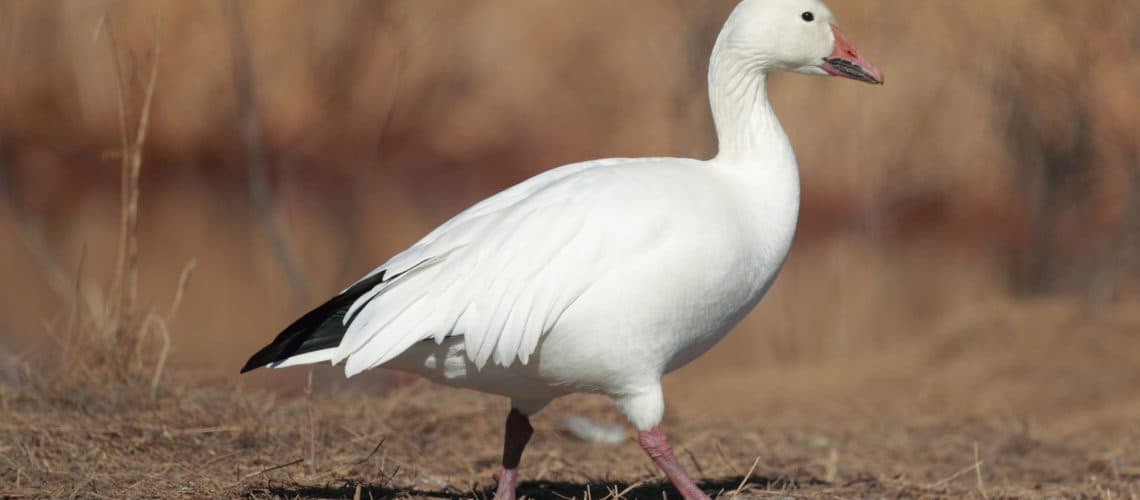
Completely white except for black tips on their wings, snow geese are famous for flying in their high altitude long diagonal lines or V-formations and sometimes fly 2,600 kilometers or more without stopping. During their flight down south, snow geese stop from time to time for up to a few days to feed and replenish their energy supplies. They often fly at night and call one another constantly to stay together and not get lost in the dark. On wintering grounds, Snow geese form massive flocks of several thousand birds and where their ranges overlap, they are often found in mixed flocks with other smaller geese. Flocks are typically very tightly bunched whether they are on land or sitting in the water.
Snow geese establish colonies of hundreds of thousand nesting pairs far enough north to be out of range of animals like stoats, weasels, foxes, wolverines and wolves. Their main predator they have to worry about is the Arctic fox but the geese outfox (no pun intended…maybe a little intended!) them through sheer numbers. At the nesting sites, there are so many eggs and chicks that Arctic foxes can feast on them but even though the foxes have their fill, there are plenty of young Snow geese remaining to carry on the species. Four out of five chicks are already fledgling by the end of summer.
Adult snow geese stuff themselves with roots of bulrushes during the summer and the young eat the tender tips of marsh grass leaves. They eat fast so they have enough stored energy for the long journey south and because the grass and leaves they eat have relatively little food energy they have to eat a lot. Their food is digested very quickly and the geese defecate almost as fast as they eat.

